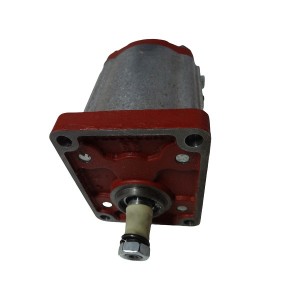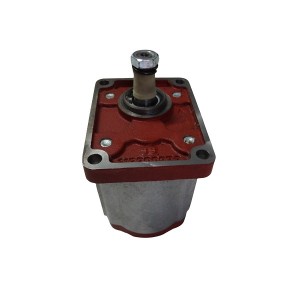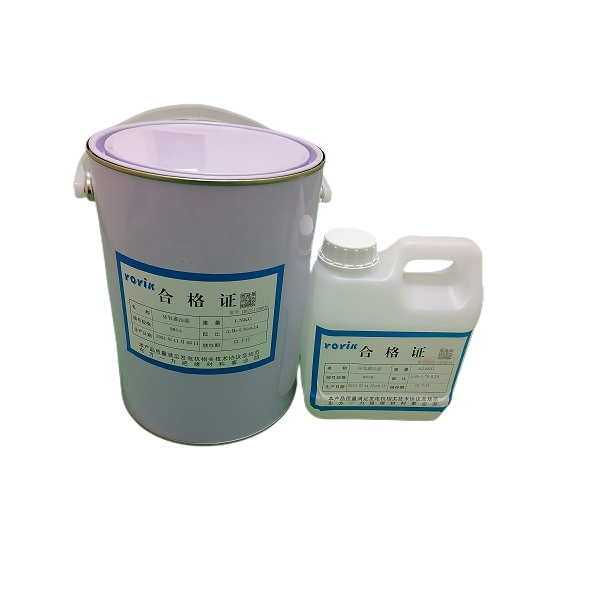In a power plant’s steam turbine EH oil system, the 2PB62DG28P1-V-VS40 circulating pump is a critical component in maintaining normal system operation. When the circulating pump fails, it often indicates severe deterioration of the EH oil quality, which not only affects system pressure stability but can also lead to more serious equipment failure. Below, we will deeply analyze the relationship between circulating pump failure and EH oil quality, explore potential causes, and propose practical preventative measures.
I. The Correlation between Circulating Pump Failure and Oil Quality
When a power plant’s steam turbine EH oil circulating pump, 2PB62DG28P1-V-VS40, fails, the most immediate symptoms are a drop in system oil pressure, an abnormally high oil temperature, and alarm signals from the control system. In these situations, operators often first check the electrical system, overlooking oil quality issues. In reality, a circulating pump failure is often an early warning sign of EH oil deterioration, rather than a simple mechanical failure. EH oil, the “blood” of the hydraulic system, directly impacts the proper operation of the circulating pump. When oil quality deteriorates to a certain extent, the oil’s viscosity, cleanliness, and lubrication properties decrease, leading to increased wear on the circulating pump’s internal components and ultimately causing the pump to seize or fail to start.

II. Underlying Causes of Circulating Pump Failure Due to EH Oil Deterioration
EH oil degradation is primarily manifested by oxidation, increased moisture, particulate contamination, and additive depletion. These changes can directly lead to operational problems with the circulating pump. First, the acidic substances produced by oxidation corrode the circulating pump’s metal components, forming rust and deposits that hinder the proper movement of the pump’s internal components. Second, increased moisture reduces the oil’s lubricating properties, increasing internal friction, causing difficulty starting or even seizure. Third, particulate contamination can clog the pump’s oil inlet and internal passages, causing insufficient oil supply or even complete inability to operate. Finally, additive depletion reduces the oil’s antioxidant and anti-wear properties, accelerating wear on circulating pump components.
An underlying cause of circulating pump failure is also related to improper oil temperature control. When the EH oil system temperature is too high, oil degradation accelerates significantly, reducing oil viscosity and lubrication performance. This leads to increased friction within the circulation pump and difficulty starting. High temperatures also accelerate oil oxidation, causing more deposits to form, further increasing the risk of circulation pump failure.
III. Correlation Analysis between Oil Quality Monitoring and Circulation Pump Operating Status
The operating status of the 2PB62DG28P1-V-VS40 circulation pump is closely correlated with EH oil quality. Oil degradation gradually affects the efficiency of the circulation pump, ultimately causing it to stop operating. This impact is a gradual process: initially, oil quality deteriorates slightly, resulting in a slight decrease in circulation pump efficiency. Subsequently, oil quality deteriorates further, causing the circulation pump to begin intermittently stopping. Finally, oil quality deteriorates significantly, rendering the circulation pump completely unable to start. By monitoring the operating status of the circulation pump, oil quality issues can be detected promptly and system failures avoided.
In actual operation, current, vibration, and noise levels of the circulation pump are important indicators of its operating status. When EH oil quality deteriorates, the circulating pump’s current draw gradually increases, along with increased vibration and noise. These changes often become apparent before the circulating pump completely stops, providing valuable time for early intervention. Therefore, establishing a correlation analysis model between the circulating pump’s operating status and oil quality parameters can effectively predict and prevent circulating pump failures.
IV. A Systematic Approach to Preventing Circulating Pump Failures
The key to preventing 2PB62DG28P1-V-VS40 circulating pump failures lies in establishing a comprehensive oil quality monitoring and maintenance system. First, EH oil quality should be regularly tested for key indicators such as viscosity, acid value, moisture content, and particle size. A comprehensive oil quality analysis is recommended quarterly, with more frequent testing during critical operating phases. Second, strengthen maintenance of the fire-resistant oil filtration system to ensure that the filtration accuracy meets system requirements or exceeds, effectively removing particulate contaminants from the oil.

Regarding oil temperature control, the EH oil cooling system should be optimized to ensure that the oil temperature is consistently maintained within the acceptable range of 40-50°C. Additionally, regularly inspect the tank air respirator to prevent external contaminants from entering the oil system. For systems experiencing oil deterioration, oil replacement and system cleaning should be considered to thoroughly remove internal deposits and contaminants.
In addition, routine inspections and maintenance of circulating pumps should be strengthened. Check the operating status of the circulating pumps during each shift, including parameters such as current, vibration, and noise, to promptly detect abnormalities. Regularly disassemble the circulating pumps for inspection, assess internal wear, and replace worn parts. By establishing a comprehensive equipment record and tracking the operating history of the circulating pumps, failures can be more accurately predicted and prevented.
V. Case Study: From Circulating Pump Failure to Preventive Maintenance
A power plant in Shandong, China, experienced a sudden stoppage of an EH oil circulating pump, 2PB62DG28P1-V-VS40. Initial inspections revealed that the electrical system was normal, but oil analysis revealed excessive acidity and severe particle size. Further inspection revealed that the oil filter had not been replaced for an extended period, leading to a large amount of particulate matter accumulating inside the circulating pump, ultimately causing the pump to seize.
After learning from this experience, the power plant established a comprehensive oil quality monitoring and preventive maintenance system: monthly oil quality testing, quarterly oil filter replacement, and semi-annual system cleaning. Furthermore, the circulating pump’s operating status was incorporated into an intelligent monitoring system, which analyzes parameters such as the pump’s current and vibration in real time to provide early warning. These measures significantly reduced the circulating pump’s failure rate and significantly improved system operational stability.
In summary, the safe operation of the 2PB62DG28P1-V-VS40 circulating pump, a core component of the power plant’s steam turbine EH oil system, is directly related to the stability and safety of the entire unit. When a circulating pump stalls, attention should not only be focused on the electrical system, but also on EH oil quality. By establishing a scientific oil quality monitoring system, strengthening routine maintenance, and implementing preventive measures, circulating pump failures can be effectively prevented, ensuring the safe and stable operation of the power plant.
When looking for high-quality, reliable EH oil pumps, YOYIK is undoubtedly a choice worth considering. The company specializes in providing a variety of power equipment including steam turbine accessories, and has won wide acclaim for its high-quality products and services. For more information or inquiries, please contact the customer service below:
E-mail: sales@yoyik.com
Tel: +86-838-2226655
Whatsapp: +86-13618105229
Yoyik offers various types of power plants spare parts for steam turbines, generators, boilers as below:
Stop Valve J61H-64P
Safety Valve A48Y-300Lb
Pneumatic Quick Closing Valve Q661H-64 Sa-105
Bladder With Seal Kit Nxq-Ab-63/31.5-L-Y
Buttery Valve Hbw1
Block Valve Sd61H-P55110V Sa-182 F91
Boiler Drum Safety Valve A68Y-250
Valve Rm3Pt35Kv
Power Plant Shut-Off Valves Wj50F3.2P
Accumulator Assembly Nxq2-F40/3105-H
Valve Cs941H-16C
Bearing 2G96R160W3
Stop Valve J61Y-2000Cl
Servo Valve Price 078N208E
Stop Valve J11-16T
Safety Valve A68Y-64
Pressure Relief Valve Ysf9-70/130Kkj
Latching Electromagnet Zyhy
Skin Nxq-A25/31.5-L-Eh
Stop Valve J61H-40
Electric Stop Valve J965Y-320 25
Double Shut Off Valve 20Fwj1.6P
Gate Z41W-10P
Throttle Valve L61Y-250P 12Cr18Ni9
Reheat Hot Section Plugging Valve Sd61H-P5450V Zg15Cr1Mo1V
Gate Z73H-16C
Swing Check Valve H44Y-40C
Valve Seal Kit Mg.00.11.19.01
Pump Casing Wearring Pcs1002002380010-01/502.02
Electric Stop Valve J961Y-2600Spl
Post time: Sep-08-2025













